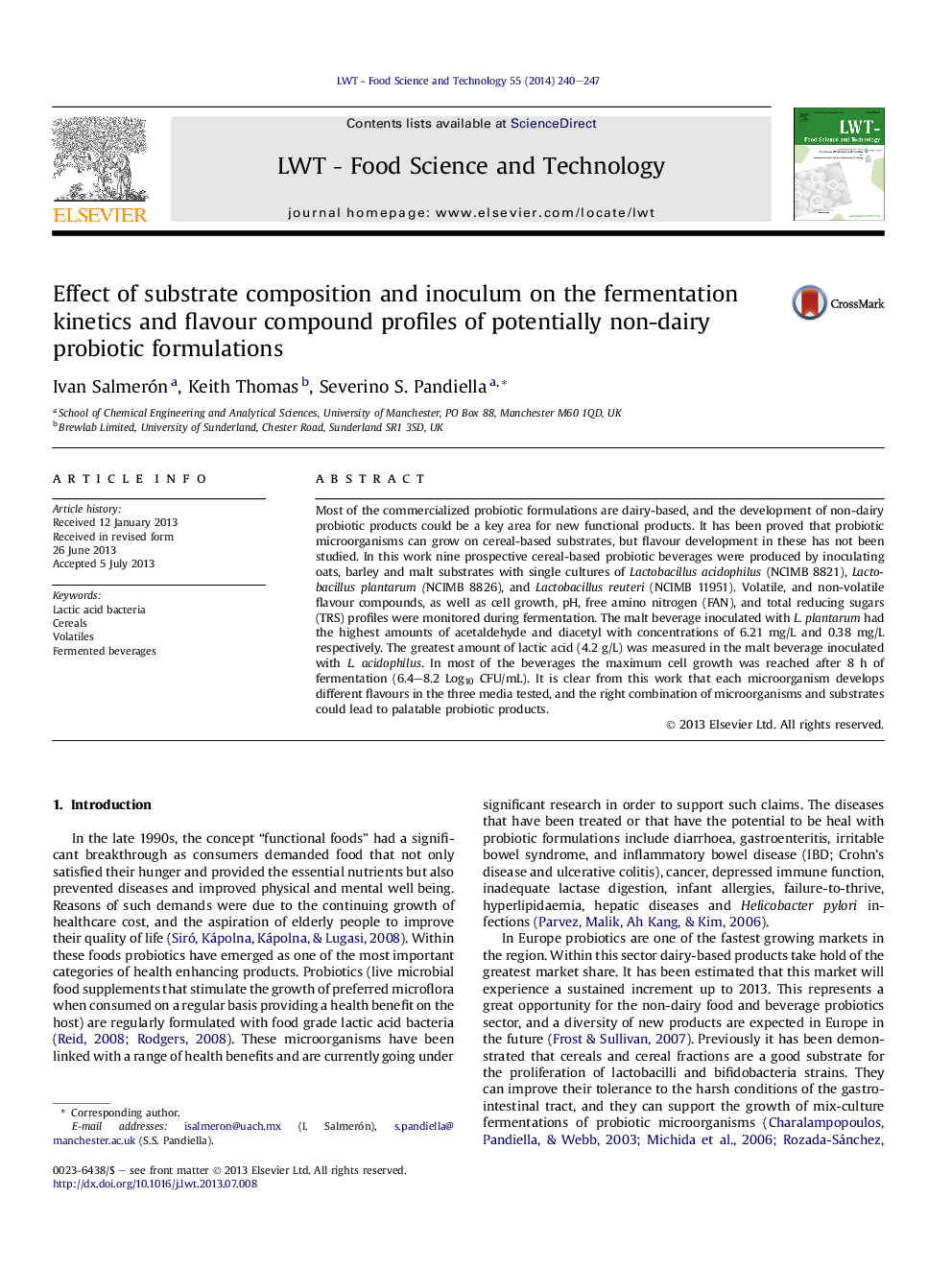| Article ID | Journal | Published Year | Pages | File Type |
|---|---|---|---|---|
| 6403917 | LWT - Food Science and Technology | 2014 | 8 Pages |
Abstract
Most of the commercialized probiotic formulations are dairy-based, and the development of non-dairy probiotic products could be a key area for new functional products. It has been proved that probiotic microorganisms can grow on cereal-based substrates, but flavour development in these has not been studied. In this work nine prospective cereal-based probiotic beverages were produced by inoculating oats, barley and malt substrates with single cultures of Lactobacillus acidophilus (NCIMB 8821), Lactobacillus plantarum (NCIMB 8826), and Lactobacillus reuteri (NCIMB 11951). Volatile, and non-volatile flavour compounds, as well as cell growth, pH, free amino nitrogen (FAN), and total reducing sugars (TRS) profiles were monitored during fermentation. The malt beverage inoculated with L. plantarum had the highest amounts of acetaldehyde and diacetyl with concentrations of 6.21 mg/L and 0.38 mg/L respectively. The greatest amount of lactic acid (4.2 g/L) was measured in the malt beverage inoculated with L. acidophilus. In most of the beverages the maximum cell growth was reached after 8 h of fermentation (6.4-8.2 Log10 CFU/mL). It is clear from this work that each microorganism develops different flavours in the three media tested, and the right combination of microorganisms and substrates could lead to palatable probiotic products.
Related Topics
Life Sciences
Agricultural and Biological Sciences
Food Science
Authors
Ivan Salmerón, Keith Thomas, Severino S. Pandiella,
